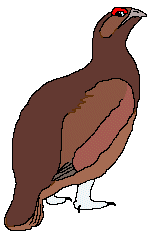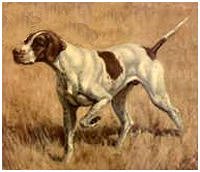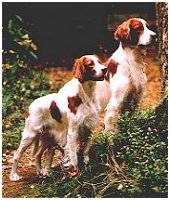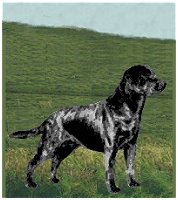![]()
They may call the 12th of August the "Glorious 12th" but it's not so glorious for everyone, and certainly not for the Red Grouse! The date marks the start of the Grouse-Shooting season in Britain, when the huntin'-shootin'-fishin' brigade dust off their green wellies, Barbour jackets and double-barrelled shotguns and set off in their Range Rovers for the moors of northern England and Scotland to commence their annual slaughter.
I think at this point I ought to make my standpoint clear : as a country dweller myself I can just about accept the shooting of game birds to eat, have purely personal problems with fishermen (because they leave such a MESS when they come fishing in my village) but cannot, and will not, accept hunting with hounds as a pastime - as Oscar Wilde put it so nicely, "The unspeakable in pursuit of the uneatable." Having got that off my chest, I will return to the subject in hand : Grouse shooting.
 |
|
Many of the grouse moors are in private ownership and bring in a great deal of profit during the shooting season by charging amateurs and enthusiasts alike large sums to sit in pouring rain on bleak hillsides, waiting for the chance to shoot at the birds as they whizz by! An essential element of any kind of rough shooting is the gundog: a well-trained dog is an asset to any sportsman and a pleasure to watch at work. There are a number of gundog breeds seen, some more common than others, and all have their role to play although there is a growing trend towards the general-purpose gundog. | |
POINTERS, as their name suggests, are bred to do just that : point out where the game is hiding. English Pointers are handsome dogs, predominantly white with black, liver, orange or lemon patches and spots. On finding game, they will not charge in and flush it out but will adopt the characteristic "point" for which they are named and will freeze with their head, back and tail forming a line, one front paw raised, indicating with their nose where the game is hidden. The majority of Pointers are also good retrievers. |  |
 | SETTERS were originally meant to "set" the birds up for the guns, ie. flush them out once the pointers had found them and put them on the wing, a task which these lively dogs relish. Nowadays, however, most setters retrieve too. Setters come in four varieties - English, Gordon, Irish and Irish Red-and-White (left - once considered a colour variation of the Irish but now recognised as a breed in its own right) with the English probably the most commonly used for shooting. They are all large, long-haired dogs, with the two Irish slightly lighter and the Gordon slightly heavier in build. English Setters have a coat with a white background, ticked and spotted with black, liver or lemon or tri-coloured, Irish Setters are the familiar deep mahogany red, Red-and-Whites are, as their name implies, white with red patches, and Gordon Setters are a rich black-and-tan. |
SPANIELS are very popular as gundogs, particularly the Springer Spaniel. Springers are lively little dogs whose sole aim in life seems to be to rush about, tail wagging furiously, hunting for game which they will then "spring" for the marksmen to shoot. A good Springer will then retrieve the fallen bird and bring it straight back to its handler, across moorland, through scrub, over fences, through water - whatever is in its way will be overcome. |  |
"There is no part of a dog's work to the gun which is more important than retrieving, whether it is considered either from the standpoint of profit or pleasure." - B. Waters, 1895, in the preface to Fetch and Carry: A Treatise on Retrieving | |
 | RETRIEVERS, as the quotation above says, are essential to the grouse shooter. The birds will come down in all probability some distance away, across rough country and possible in an inaccessible position, and it is then that a good retriever comes into his own. The most popular retrieving breed by far is the Labrador Retriever, with black as the most common colour although the breed also comes in chocolate and yellow; Golden Retrievers are also commonly used. Like all gundogs, Labradors have excellent temperaments and are easily trained in basic obedience, although training a good working dog takes time and patience. They are excellent with children and other family pets and make wonderful companions and family dogs, BUT they grow quite large, eat a lot and need a great deal of exercise to keep them fit and happy. |
HUNT-POINT-RETRIEVE breeds come from mainland Europe but are becoming more popular in the UK because they combine the abilities of all the different groups of gundogs into one dog. The HPR breeds are mostly large dogs and include the three varieties of German Pointer, Large Munsterlander (right), Weimeraner, Hungarian Vizla, Italian Spinone and the slightly smaller Brittany. They will find game, set it up for the guns and then retrieve the fallen birds across any terrain, and all are good water dogs. They are all happy working "fur or feather" and additionally, on the Continent some of the larger breeds, eg. the Large Munsterlander, are occasionally used to bring down game as large as deer. Speaking from personal experience (I keep Large Munsterlanders) they make wonderful companions. |

|